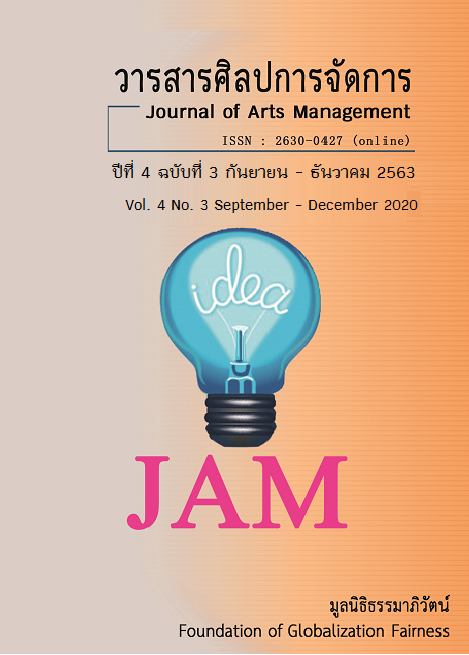The soft sculptures of interactive learning for special needs children.
Main Article Content
Abstract
This project provides colorful soft sculptures for special needs students to observe, touch and explore. The sculptures are inspired by "imperfect" drawings of the children themselves, who are on the autistic and cognitive spectra. The artists build upon the aesthetic and thematic strengths of the children's art, which often display the depth and power of a pure, innocent mind. The child's concept is transformed into three-dimensional form, enhancing its most effective features and altering the weaker elements. The resulting three-dimensional sculpture, with its soft texture and abundant color, invites touching and exploring with the hands as well as with the eyes. The sculpture becomes a new tactile experience that stimulates the child's imagination and creativity. It is a creative exchange between the children and the adult artist, and the children can see their own contribution to the artistic creation.
The st1ep-by-step process of creating the sculptures, including the collection of fabric and all the hand sewing, demands meticulousness and determination. It is a cooperative effort that communicates the combined vision of children and adult artists. The soft sculptures can become part of a new, interactive learning center. They will be exhibited in Thailand and abroad.
Article Details
Views and opinions appearing in articles in the Journal of Arts of Management It is the responsibility of the author of the article. and does not constitute the view and responsibility of the editorial team I agree that the article is copyright of the Arts and Management Journal.
References
กองสาราณียกร. (2555). ศิลปะบำบัด ศิลปะเยียวยาใจ. จดหมายข่าวอาทิตย์อัสดง, 4(11). สืบค้นเมื่อ 26 กรกฎาคม 2561. จาก http://budnet.com/sunset/node/26
น.ณ ปากน้ำ. (2522). หลักการใช้สี. กรุงเทพฯ: ไทยวัฒนาพานิช.
Mini Berlin. (2011). Humanoids. Retrieved April 20, 2017. from: https://mimiberlin.com/humanoids/


